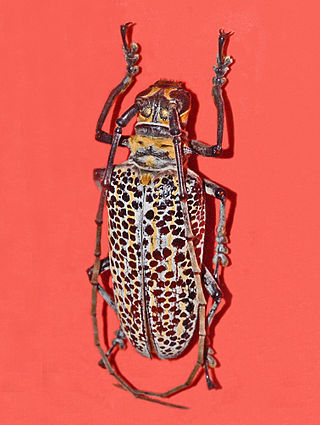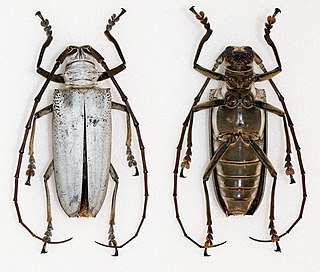
Konzhukovia is an amphibian genus that belongs to an extinct family Konzhukoviidae of temnospondyls, the largest clade of basal tetrapods including about 198 genera, 292 species, and more than half of which were alive during the early Mesozoic period. The animal was a predator that lived about 260 million years ago, and could get up to about three meters in length. Specifically, Konzukovia lived during the Permian, between 252 and 270 million years ago according to the type of rock the fossil was found in. There are three species within this genus, K. vetusta, K. tarda, and K. sangabrielensis, the first two originating from Russia while the latest originating from Southern Brazil. The discovery of this specimen in Southern Brazil provided more evidence to support the idea that during this animals existence, there was a “biological corridor” because of the supercontinent Pangea, allowing these species to be found so far apart from each other. Konzhukovia belongs to the family Archegosauridae, a family consisted of large temnospondyls that most likely compare to modern day crocodiles. Since the discovery of the latest species, K. sangabrielensis, Pacheco proposes that there must be the creation of a new family, Konzhokoviidae, a monophyletic group in a sister-group relationship with Stereospondlyi in order to accommodate the three species. Konzhukovia skulls usually exhibit typical rhinesuchid features including an overall parabolic shape, small orbits located more posteriorly, and the pterygoids do not reach the vomer. These animals were long-snouted amphibians that had clear adaptations made for fish catching, as well as exemplifying aquatic features.
The 1990–91 Segunda División B season was the 14th since its establishment. The first matches of the season were played on 1 September 1990, and the season ended in 23 June 1991 with the promotion play-off final games.
Real Oviedo Vetusta is a Spanish football club based in Oviedo, in the autonomous community of Asturias. Founded in 1929 as Unión Sportiva Ovetense, it is the reserve team of Real Oviedo, and currently plays in Tercera Federación – Group 2, holding home games at El Requexón, with a 3,000-seat capacity.
The King Alfonso XIII's Cup 1925 was the 25th staging of the Copa del Rey, the Spanish football cup competition.

Agrotis vetusta, the old man dart, spotted-legged cutworm or muted dart is a moth of the family Noctuidae. The species was first described by Francis Walker in 1865. It is found in North America, from southern Alaska to Nova Scotia, southward into Mexico.

Xylena vetusta, the red sword-grass, is a moth of the family Noctuidae. The species was first described by Jacob Hübner in 1813. It is found in the Palearctic realm from northwestern Africa through Europe and Asia up to central Siberia. In the north it is found up to the Arctic Circle and Iceland.

Rosenbergia is a genus of longhorn beetles in the subfamily Lamiinae, close to the genus Batocera.

Rosenbergia rufolineata is a species of longhorn beetles in the subfamily Lamiinae.

Rosenbergia exigua is a longhorn beetle species found in New Guinea. It can grow to be up to 32 mm long. It was first described by Charles Joseph Gahan in 1888.
Rosenbergia drouini is a species of beetle in the family Cerambycidae. It was described by Rigout in 1992. It is known from Australia.
Rosenbergia schmitti is a species of beetle in the family Cerambycidae. It was described by Rigout in 1981.
Rosenbergia chaminadei is a species of beetle in the family Cerambycidae. It was described by Rigout in 2004.
Rosenbergia freneyi is a species of beetle in the family Cerambycidae. It was described by Rigout in 1988.
Rosenbergia hudsoni is a species of beetle in the family Cerambycidae. It was described by Nylander in 2004.

Rosenbergia lactiflua is a species of beetle in the family Cerambycidae. It was described by Fairmaire in 1883. It is known from Papua New Guinea and Solomon Islands. It includes the varietas Rosenbergia lactiflua var. coerulescens.

Rosenbergia mandibularis is a species of beetle in the family Cerambycidae. It was described by Coenraad Ritsema in 1881.

Rosenbergia straussi is a species of beetle in the family Cerambycidae. It was described by Gestro in 1876.
Rosenbergia weiskei is a species of beetle in the family Cerambycidae. It was described by Heller in 1902.

Vetusta Morla is a Spanish indie-rock band originally from the city of Tres Cantos located near Madrid, Spain. The band was formed in 1998 and took its name from the giant old tortoise Morla, a character in the children's book The Neverending Story by Michael Ende. "Vetusta" means "extremely old" or "decrepit" in Spanish.








